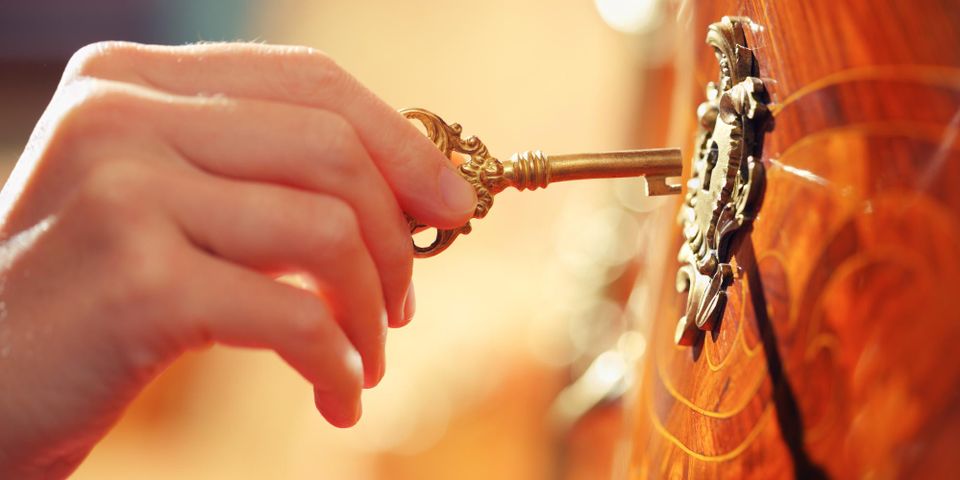
In the year 704 BC, in the city of Khorsabad (modern-day Iraq), the first known lock was created. It was wooden with a corresponding wooden key shaped like a large, crude toothbrush. The lock and key were reasonably strong but degraded quickly, especially if exposed to the elements. But people needed a way to protect valuables, and, over time, the technology spread. Locks became popular throughout Egypt, Greece, Rome, China, and the Middle East, as did the locksmith profession.
Early Design
The earliest locks had pin tumblers, a modified version of which is still available today. Mesopotamians used wood pins of various lengths to keep the door bar in place. The only way to open the lock was to use a key with carved notches that complemented the shape of every pin, lifting them so the latch opened.
Because wood wears over time, these locks weren’t very reliable. Eventually, the Mesopotamians made the pins out of brass instead of wood, which was more secure and less likely to snap under pressure or degrade with use.
Signifiers of Wealth
Because locks were difficult to build, only the wealthy class owned them at first. Keys came to be a status symbol that demonstrated the owner had enough valuables to necessitate protection.
Prosperous Romans wore theirs around the fingers like rings to flaunt their power. They also helped advance the technology to make locks smaller and more portable, which made them more practical for protecting chests and containers.
The First Warded Locks
In the Middle Ages, the English introduced metal warded locks, which used concentric plates, or wards, instead of pins to keep the lock engaged. Like with the older system, the key was designed with a corresponding pattern of notches to fit between the wards and move the bolt open or closed.
Although these keys were more durable than their wooden predecessors, they were also easier to outmaneuver. Thieves invented skeleton keys, which were filed thin to circumvent ward systems entirely.
Locksmiths vs. Lockpicks
In response to new security concerns, the locksmith profession soared. Locksmiths became well-renowned craftspeople who designed devices with increasingly complex mechanics to outsmart lockpicks—a new brand of thief.
 Over the centuries, master locksmiths from around the world added features to make locks more secure. In 1843, Linus Yale Sr. invented the spring-loaded pin lock, which uses flat keys with lateral grooves and notches, which is what most people use today.
Over the centuries, master locksmiths from around the world added features to make locks more secure. In 1843, Linus Yale Sr. invented the spring-loaded pin lock, which uses flat keys with lateral grooves and notches, which is what most people use today.
Advances in physical security are still emerging, as are auxiliary electronic locking systems. New models sometimes allow users to type in a password instead of using a key or limit access to a certain time frame.
If you need a locksmith to unlock your car, create spare keys, or program a transponder key, contact the experts at One Call Lock & Key, serving Austin, TX, and the surrounding areas. They are licensed, bonded, and insured and offer 24/7 emergency service. Call (512) 353-1112 to make an appointment or visit their website to learn more about the family business.
About the Business
Have a question? Ask the experts!
Send your question

